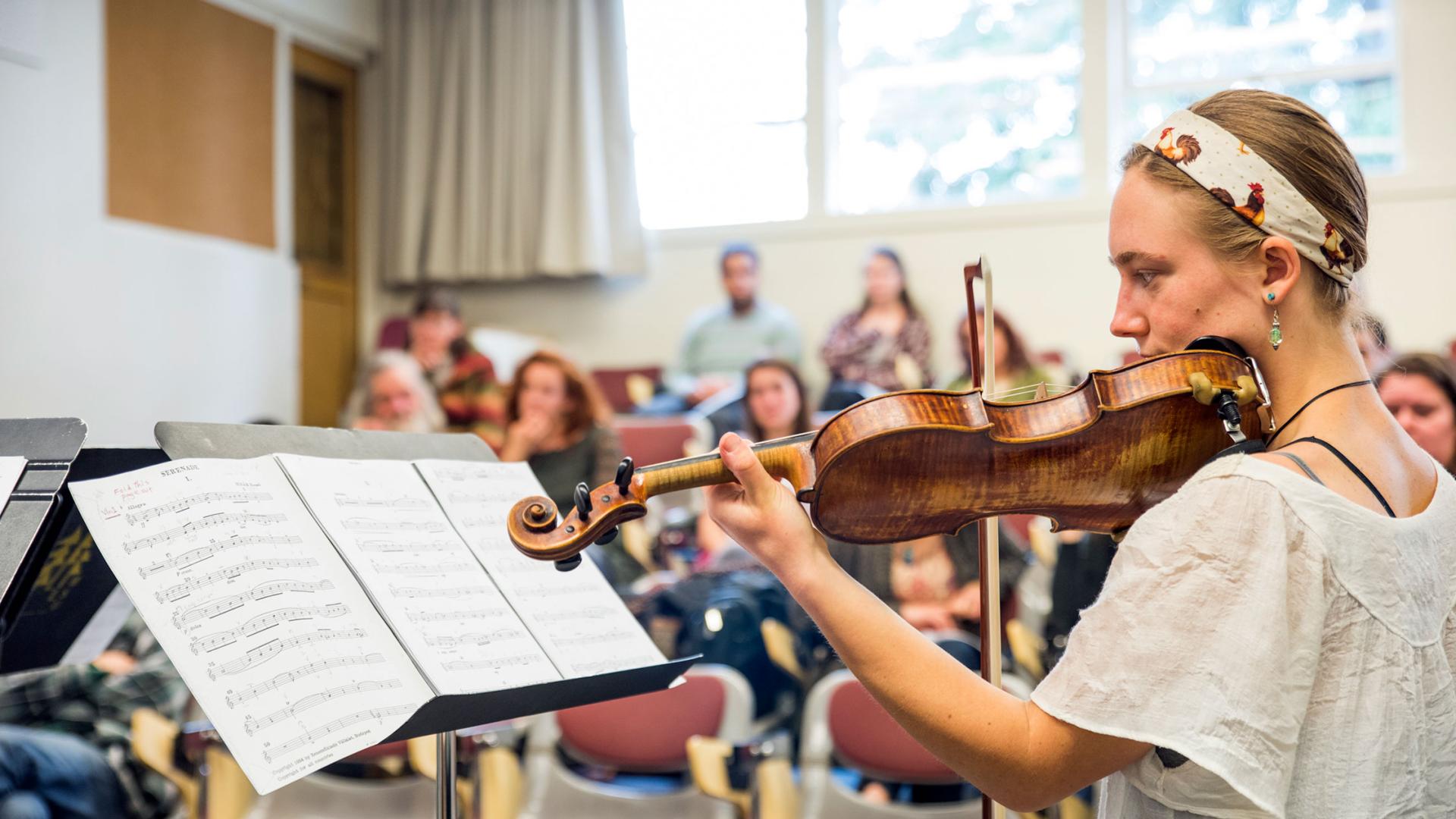Breadcrumb
General Education and All-University Requirements (GEAR)
GEAR Guide Updates Spring 2025
Use these downloadable PDF guides to learn about the changes to GEAR requirements, and how to piece together courses that meet these requirements in order to help you graduate on time. Working with an advisor can help you understand these requirements more in-depth. You are encouraged to reach out to your Academic Advisor or the Advising Center on campus for support!
GEAR: Then and Now
This Fall 2025 roadmap shows revised naming conventions for the GE subject areas.
GEAR Guide for Students
Students - use this guide to help you plan which course requirements are needed for graduation. Work with an advisor to compose your GEAR plan in DARS, using this guide as a helpful tool.
GEAR Bingo for Students
Complete each section on this Bingo page to meet your requirements for graduation. Work with an advisor to compose your GEAR plan in DARS, using this guide as a helpful tool.
The GEAR program has been updated in alignment with the CSU EO 1100 general education requirements. The new general education nomenclature takes effect the Fall of 2025.
The GEAR Curriculum and Assessment Committee is a subcommittee of the Integrated Curriculum Committee (ICC). The link below identifies current membership.
GEAR Committee Membership
Policy on GEAR Program Features and Course Certification Requirements
Curriculum Management System - Modern Campus Curriculum
GEAR Course Proposals
All GEAR course proposals, whether for new courses, recertification of existing GEAR courses, or changes in current certification of existing GEAR courses, are submitted through Modern Campus Curriculum.
NEW GEAR Courses and GEAR Course Changes
In addition to completing either the new course proposal or the course change proposal form in Modern Campus Curriculum, you will need to complete the GEAR Course Certification/Recertification Form which provides the GEAR committee and greater ICC with detailed information on how the new course aligns with specific content criteria and GEAR program learning outcomes. The completed GEAR certification form is attached to the proposal in Modern Campus Curriculum.
Proposals to Satisfy a GEAR Upper-Division Requirement through Course of Study
Humboldt Senate Resolution 08-08/09-EP allows completion of a program of study in a major to fulfill the requirements of the upper division GEAR Area 2/5, 3 or 4.
The GEAR Course Certification/Recertification Form includes information on applying for meeting this requirement through course of study.
Recertification of Existing GEAR Courses
Submitting a Proposal for GEAR Recertification
- Fill out a Course Change/Reactivation Form in Modern Campus Curriculum.
- Under Change/Reason, select GEAR Recertification.
- Check Recertification in response to the prompt, “Is this course’s GE, GWAR, DCG, or American Institutions certification changing?”
- Follow instructions to download and complete parts I and II of the GEAR Course Certification/Recertification Form.
- Attach completed form according to instructions.
Rationale for Recertification Protocol
Executive Order 1100 requires the university to “review courses approved for GE credit on a regular, periodic basis to assure these courses continue to meet campus GE outcomes and expectations.” It also stipulates that the university maintain an assessment protocol “that aligns the GE curriculum with campus GE outcomes; specifies explicit criteria for assessing the stated outcomes; identifies when and how each outcome shall be assessed; organizes and analyzes the collection of evidence; and uses the assessment results to make improvements to the GE program, courses, and pedagogy.”
GEAR Program Learning Outcomes and Assessment
In line with the University's continuous-improvement efforts, through the work of the GEAR committee, the Provost’s Council of Chairs, and numerous faculty across the university, new GEAR program learning outcomes were approved by the University Senate in spring 2020.
The goal of the GEAR program is to provide broad opportunities for the development of foundational skills, disciplinary knowledge, and diverse perspectives that are critical to the success of students through their educational journey at Cal Poly Humboldt and as lifelong learners.
The GEAR program learning outcomes (PLOs) are organized into three categories, foundational skills, disciplinary knowledge, and broad perspectives. They describe assessable behaviors that are much broader in focus than the numerous course-level learning outcomes developed by the faculty members and/or department committees that determine individual GEAR-course curricula across the university.
As part of the university’s comprehensive assessment plan, each GEAR course shall:
- target a specific GEAR PLO (though course content may address more than one PLO, of course);
- feature a student learning outcome (SLO) that describes what students will do to demonstrate the PLO;
- include a signature assignment, which is an assignment of program faculty’s design that can be used to measure student progress toward the identified PLO; and
- identify an assessment tool (e.g. rubric) that will be used to score the signature assignment.
Individual GEAR courses address the content guidelines identified in the dropdowns below, and many of these courses will certainly address several of the PLOs. However, from the perspective of university-wide learning assessment, by asking each GEAR course to target just one of the PLOs via a specific SLO developed by faculty invested in the course, we are building the infrastructure to measure how well our students are achieving the GEAR PLOs.
From its broadest perspective, the learning goal of the GEAR program is that students will be able to demonstrate each of the PLOs upon completing the curriculum. Needless to say, the more that we can enrich these abilities in students’ major courses of study, the more students will graduate from Humboldt with the skills, knowledge, and perspectives that we value most highly at Humboldt.
CSU General Education Requirements
Section 40405 of Title 5 of the California Code of Regulations states that the purpose of the breadth requirements is to provide means whereby graduates will have
- achieved the ability to think clearly and logically, to find and critically examine information, to communicate orally and in writing, and to perform quantitative functions;
- acquired appreciable knowledge about their own bodies and minds, about how human society has developed and how it now functions, about the physical world in which they live, about the other forms of life with which they share that world, and about the cultural endeavors and legacies of their civilizations; and
- come to an understanding and appreciation of the principles, methodologies, value systems, and thought processes employed in human inquiries.
CSUs must plan and organize the general education-breadth requirements in such a manner that students will acquire the suggested abilities, knowledge, understanding, and appreciation as interrelated elements, not as isolated fragments.
The breadth of CSU general education requirements is detailed in Executive Order 1100.
Executive Order 1110 - Supportive Pathways
With the issue of Executive Order 1110, the CSU revised the policy for first-year student placement in English and mathematics/quantitative reasoning courses. Executive Order 1110 provides for enrollment in appropriate college-level, baccalaureate credit-bearing courses that strengthen skills development to facilitate achieving the appropriate general education student learning outcomes. Such GE courses may include, but are not limited to, various forms of co-requisite or supplemental instruction. Campuses may also offer baccalaureate, elective credit co-requisite support courses. Instructional support may be in the form of mandatory recitation course components with no unit value, online services, courses that stretch across terms, as well as concurrent pre-baccalaureate units, with specified unit limitations. In no circumstance shall a sequence of courses (including those completed in the Early Start Program) leading to and satisfying the GE Subarea 1A or 2 requirement result in earning more than eight semester units of baccalaureate credit. Campus faculty shall be responsible for designing, developing and refining appropriate courses.
Consistent with Title 5 sections regarding total units required for baccalaureate degrees, notwithstanding approved exceptions, no baccalaureate degree programs shall extend the unit requirement beyond 120 semester units. A campus must maintain an academic degree plan that allows for the completion of each of these degrees in 120 semester units. However, an individual student may complete more than 120 semester units.





